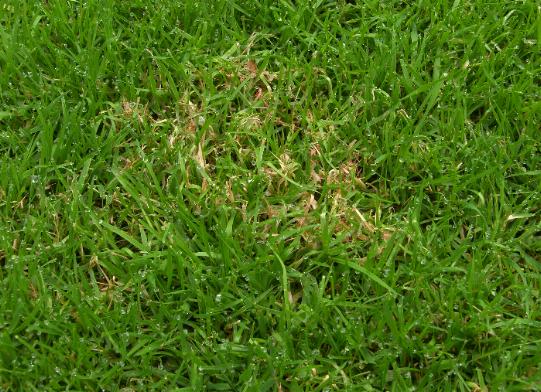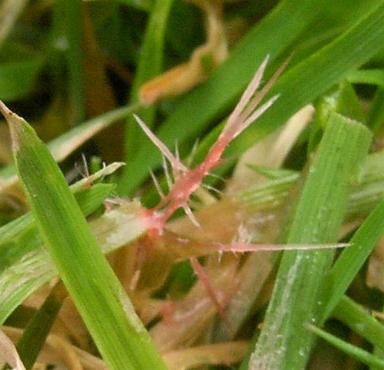
A patch of grass affected with red thread

A grass leaf with the red, forked fruiting body of Laetisaria fuciformis protruding from the tip.
A fungal disease caused by Laetisaria fuciformis, which attacks grass. It appears as irregular patches of bleached grass which have a reddish hue; they may look like footprints. On closer inspection a small red spike, which may be forked, can be seen protruding from the tip of the affected leaves. The roots of the grass are not affected so it usually recovers well, and the damage is usually for a short period. Infection usually occurs in the late summer or autumn with the finer bent or fescue grasses, during periods of high humidity, where there is compaction of the soil and a shortage of nitrogen.
Scarifying and aerating in the autumn to improve the growing conditions plus the application of a suitable fertilizer in the spring are the best means of prevention. Lift grass clippings as the dried red threads can survive to carry the disease for a later infection to occur.
Rake out the dead grass and sprinkle a topdressing containing some seed over the area to speed up the recovery, although the existing grass roots should regenerate fresh topgrowth as the red thread disappears. The systemic fungicide, Carbendazim can be used to treat the problem and prevent it from spreading, but due to EU regulations it is only available for professional greenkeepers to use in UK as a treatment for lawns.
Similar dead patches can be caused by Snow Mould or dog urine, but if you don't have a pet Red Thread could be the cause
Back to article on Plant Diseases